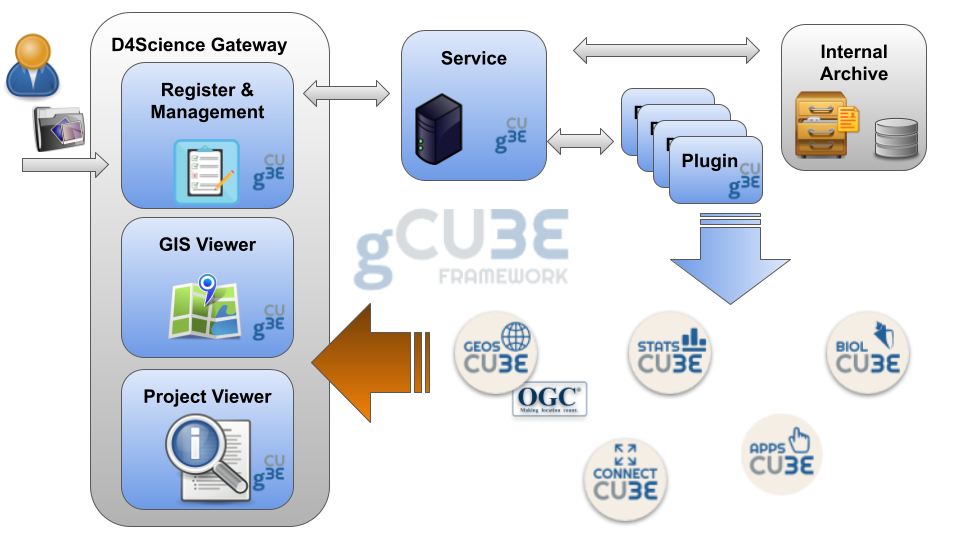GeoPortal
Contents
Overview
GeoPortal is a feature-complete framework enabling the publication, access and management of GIS projects consisting of multiple documents, images, and datasets. It can be configured with the XML specification of the GIS project data model.
This document outlines the design rationale, key features, and high-level architecture, the options for their deployment and as well some use cases.
Key features
GeoPortal key features are :
- Support for publication lifecycle
- By supporting complex Data (Meta + Payloads) archives;
- By enableing versioning, workflows, access policies;
- By supporting several materialisations (GIS, Databases, ...)
- By managing indexes (Meta catalogues, Index GIS layers)
- Maximise reusability
- By exploiting space-time GeoPortal Service
- By allowing for configurable behaviour;
- By supporting a generic meta-model;
- By offering configurable GUIs (Management grid, Insert/Edit Form, Data Viewers);
- External Data Integration
- By exploiting OGC standards.
Design
Philosophy
Aim of the framework is to maximize adaptability by supporting custom model and behaviour definition.
Architecture
The framework includes:
- Data Collection Form assisting users to publish GIS projects;
- GIS Viewer allowing any user to visualize projects on a map;
- Project Viewer assisting users to access all the information, documents, images and datasets associated to the GIS project;
- GeoPortal Service managing validation and management of GIS projects.
The service relies on the D4Science Workspace for storing and accessing attached documents and on the D4Science SDI Spatial Data Infrastructure to offer OGC Compliant Services (e.g. WMS, WFS, WCS, etc.).
It also uses an internal archive of registered documents for the management of Projects lifecycle and for querying purposes.
Following is a conceptual schema of the framework in relation to the D4Science infrastructure and user perspective.
